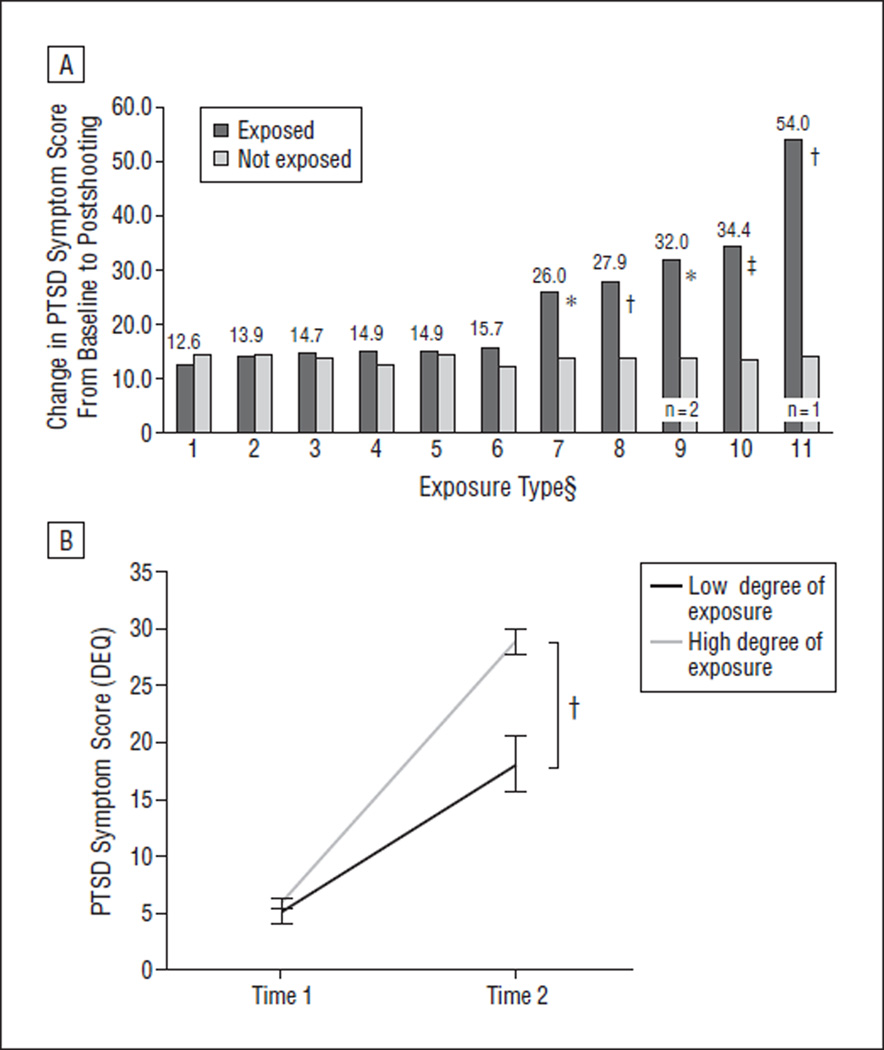Figure 1.
Effects of mass shooting on posttraumatic stress disorder (PTSD) symptoms in a prospectively assessed sample. A, Comparison of PTSD symptom severity 2 to 4 weeks after shooting by type of exposure to shooting. Each number on the x-axis represents a specific yes or no question about each individual’s exposure to the shooting: 1 =knew someone killed in shooting, 2 = knew someone wounded in shooting, 3=were in a building placed on lockdown, 4=on campus during shooting, 5=saw individuals wounded or killed, 6=saw police or other personnel surrounding the building, 7=in Cole Hall during shooting, 8=heard sound of gunfire, 9=saw gunman fire on someone, 10=saw gunman during shooting, 11=were hurt in shooting. Part A includes all individuals who had the second interview 2 to 4 weeks postshooting. B, Severity of PTSD symptoms 2 to 4 weeks after shooting by degree of exposure. This graph shows the mean PTSD symptom score (Distressing Event Questionnaire [DEQ]) at time 1 and time 2 (± standard error) A sum ranging from 0 to 2 for positive responses to high-exposure events is classified as a low degree of exposure. A sum ranging from 3 to 7 for positive responses to high-exposure events is classified as a high degree of exposure. *P< .05. †P< .005. ‡P< .001 §Sample sizes less than 5 are noted.

